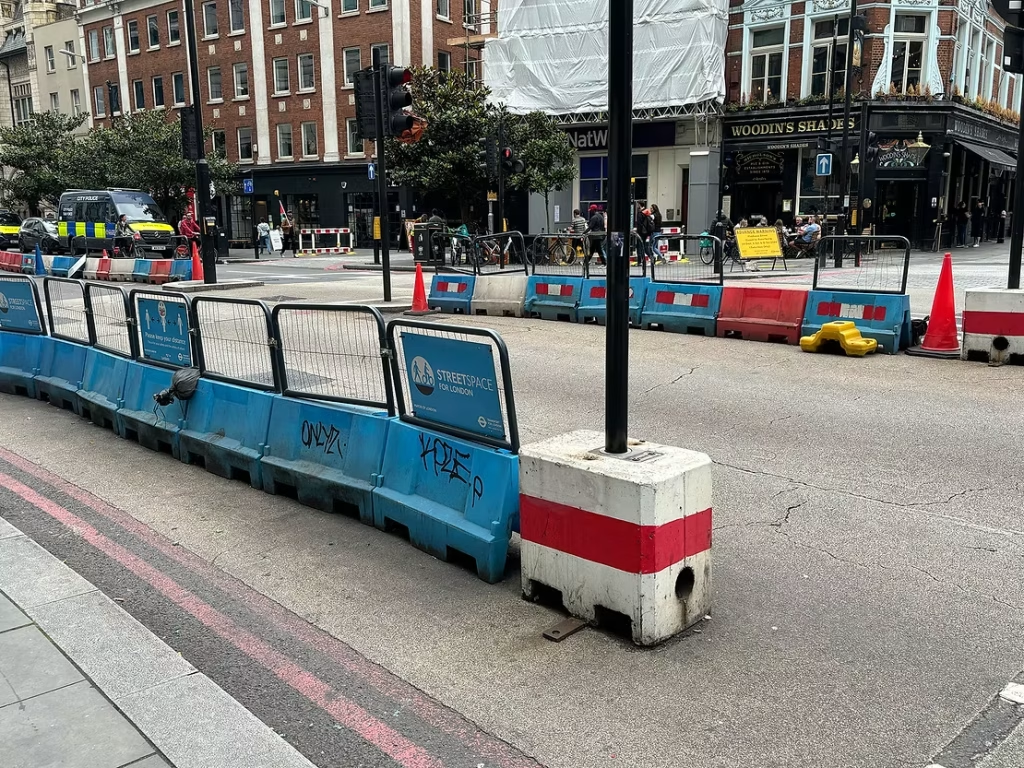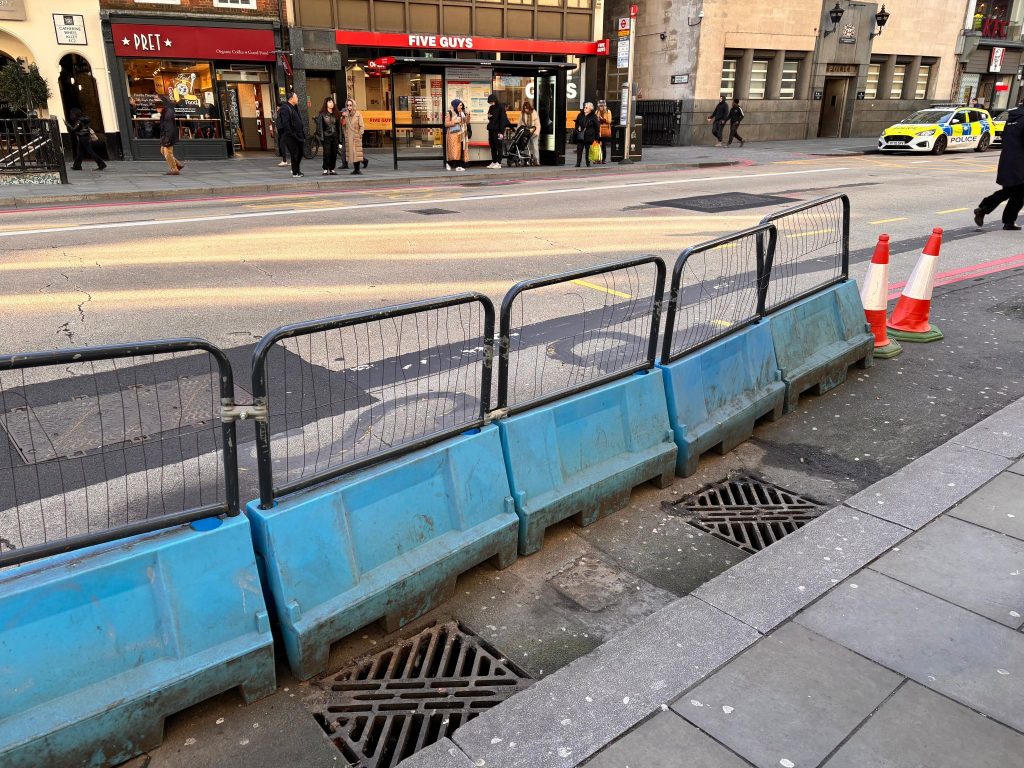One of the quirks of the City of London, is the control the City Corporation have over the Square Mile’s streetscape. Generally acknowledged for the high quality of paving, road surfaces and maintenance, there are some exceptions to the control we have over our transport infrastructure.
The A10 Bishopsgate roadway is one which is defined as a “red route” and a strategically important artery in London’s road network. Sadly, it doesn’t sit under the control of the City Corporation, instead falling to be controlled by Transport for London (TfL).
Since the temporary Covid-19 safety measures were first installed, Bishopsgate Councillors have been reflecting the voice of the community, to get the blue bollards and the extended pavements finished to the same high standards that we have elsewhere in the Square Mile. Alongside the City’s healthy streets plans, we generally welcome wider pavements to accommodate increased pedestrian volumes. However, the current structures are an eyesore, barely fulfilling the function they were intended for. They have caused disruption, restricting pedestrian flow and creating confusion for cyclists. The barriers are unsightly and no longer necessary.
Bishopsgate Councillors have been hosting regular meetings with Directors at TfL, who have made a commitment to get the temporary bollards removed and come up with a schedule of works to improve the streetscape.

In February 2025, following escalations to the Deputy Mayor of London for Transport, Seb Dance, TfL confirmed that the barriers will be removed, with work beginning this spring, replacing them with semi-permanent footways while also addressing drainage issues. This work will take place overnight to minimise disruption and is expected to be completed within a couple of months. Furthermore, TfL is developing plans for a fully permanent scheme, which will be subject to public consultation.
This week, Bishopsgate Councillors were informed that work starts on 22nd April and will be completed by 2nd July. Most work will be carried out overnight, to avoid road closures during the working day. So whilst there may be some disruption in the area, be assured that its going to result in a more pleasant environment for workers, residents and visitors to the area.
TfL have confirmed that their works will include:
* Removal of the current blue barriers and replacement with footways designed in semi-permanent materials (rubber kerbs and asphalt)
* Drainage works to fix and improve the current drainage
* A temporary cabin and compound opposite 33 Gracechurch Street
It’s great that this campaign is finally seeing some action from TfL and we look forward to discussions about the final permanent design, which sits around the UK’s busiest train station and in an important conservation area for London.

